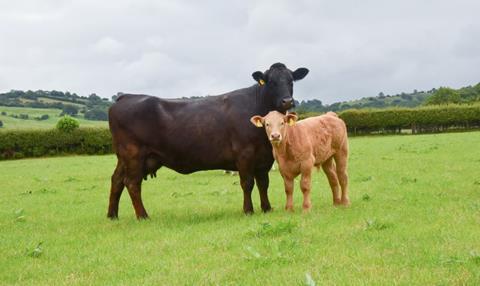A survey by Hybu Cig Cymru - Meat Promotion Wales (HCC) has revealed that here has been a "considerable improvement" in sheep and beef producer intentions, with 75% of Welsh farms now expected to maintain or increase stock numbers in the short term.

The second phase of its Farmer Intentions Survey was conducted by HCC and completed by sheep and beef producers across Wales, highlighting that pressures on Welsh flock numbers appear to have lifted slightly in recent months. Results from the survey revealed farmer fears over input costs were easing.
HCC said that lamb numbers are also estimated to stabilise somewhat from the low levels recorded in June 2023.
The trade body believes this reflected a positive shift in confidence, compared with the same time last year, when uncertainty over high input costs influenced 43% of Welsh livestock farmers to consider reducing stocking levels during Phase 1 of HCC’s survey conducted in September 2022.
Glesni Phillips, HCC’s intelligence, analysis and business insight executive, said: “Due to high farm input costs, it was anticipated that there would be higher culling rates and therefore fewer ewes for breeding during the time that followed.
“Along with fewer breeding ewes, scanning rates were also reportedly low at the start of this year due to poor weather and ewe conditions.
“These worries have been reflected in the results of the latest June survey - the Welsh Government’s Survey of Agriculture and Horticulture - which shows the number of lambs on the ground aged under one year was at 4.1 million head as of 2023, down 10% on the year, and the total number of sheep and lambs stood at 8.7 million head, down some 7% on the year.
Phillips continued: “This figure is the lowest number of sheep and lambs recorded since 2009 when numbers reached 8.2 million head.
“While the Wales figures, like those in England and Scotland, reflect quite a dip in flock numbers, the results from Phase Two are considerably more positive than they were 12 months ago. This would suggest that sheep numbers should stabilize somewhat further down the line."
Increasing stock in 2024
HCC said that the Welsh Government survey findings mean the 8.7 million Welsh flock was 26% below Wales’ peak of 11.8 million head in 1999. Figures for 2023 from England show the flock declined by 3.2% year-on-year to 14.5 million head, the lowest recorded population since 2011, while in Scotland sheep numbers fell by 2% when compared with the five-year average to 6.6 million head.
Phillips said HCC’s Phase 2 of the survey had indicated lamb producer concerns over input costs had been overtaken by other challenges within the sector such as changes to direct payments, agricultural policy and Government support schemes.
Looking at the beef sector, Phillips said Phase 2 of the survey had revealed a similar positive stocking position for beef farmers, where 65% said they will maintain or improve stocking levels compared to last year’s 47% considering reducing stock. The June survey data showed there was a small 1% fall in the Welsh herd size, with total cattle and calves falling from 1.13 million to 1.12 million head. The beef breeding herd was down 4.7% on the year to 149,290 head, and the dairy breeding herd was down 0.5% to 254,700 head.
Phillips concluded: “The dairy breeding herd had recorded three consecutive years of increased numbers before recording this small fall in 2023, with beef producers stating that farm input costs continue to put pressure on their business intentions."
This story was originally published on a previous version of the Meat Management website and so there may be some missing images and formatting issues.















